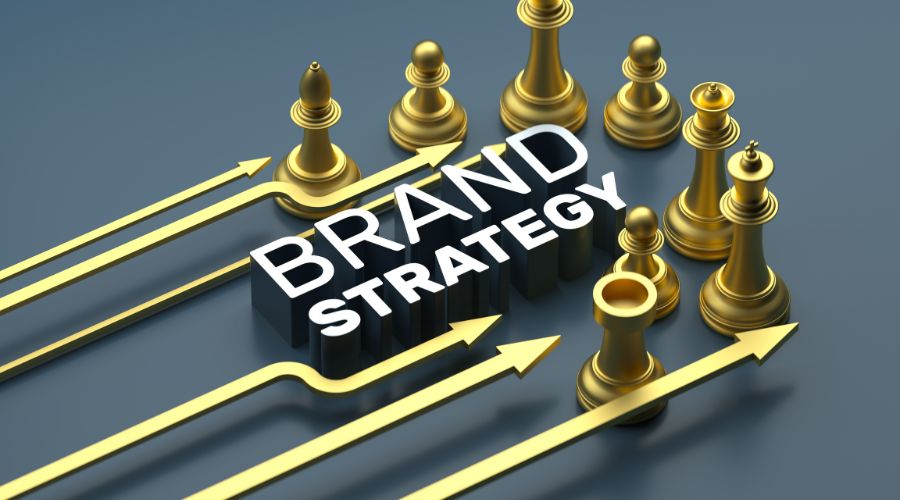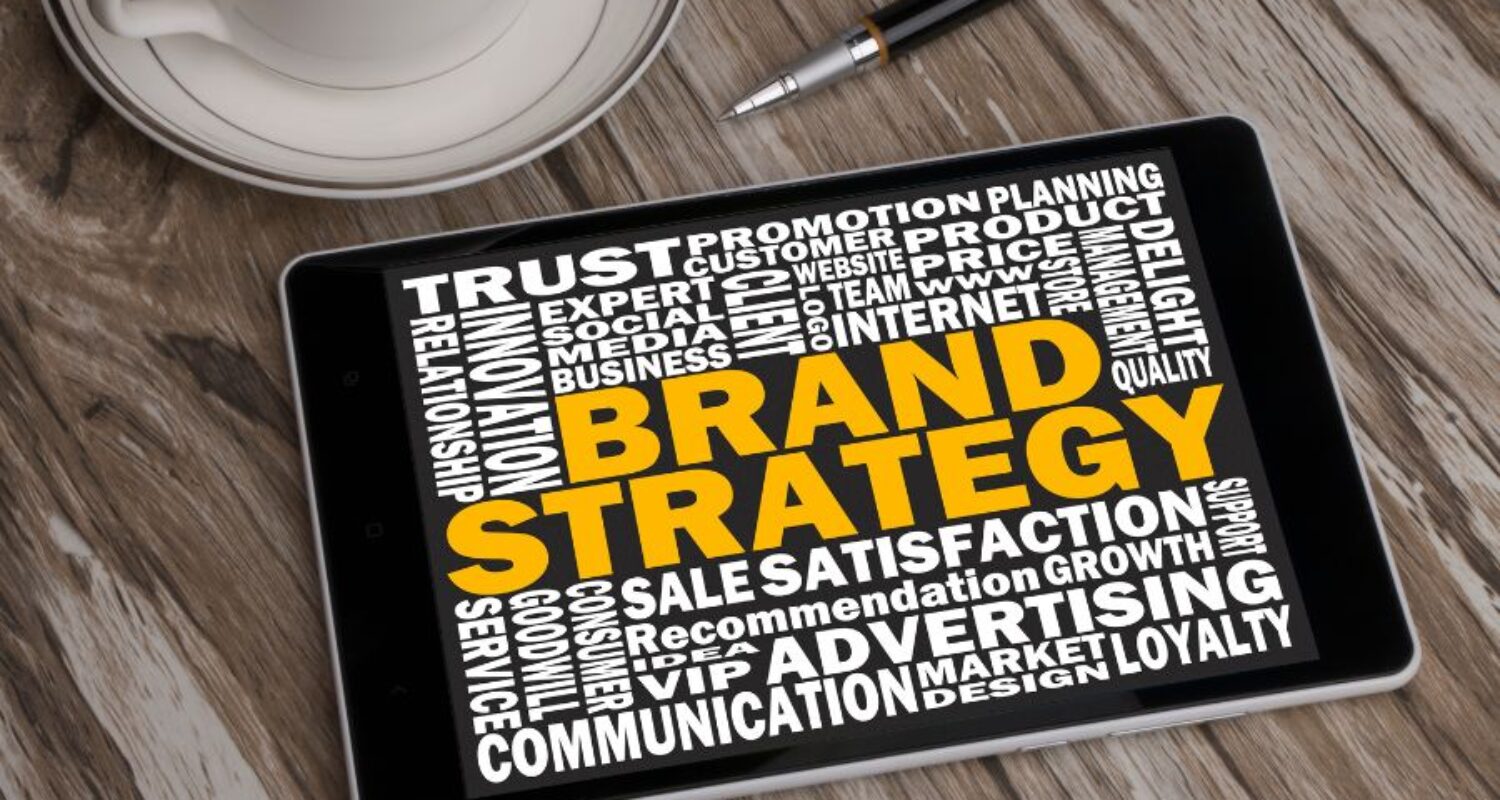Social media is key for businesses today. It helps build brand identity, connect with people, and measure success. But, with so many platforms, how do you make your efforts count? The secret is a well-thought-out social media branding strategy.
Are you making the most of your social media, or missing chances to reach your audience? Let’s dive into the top strategies and best practices used by top brands. They create a strong, consistent, and impactful social media presence.
Key Takeaways:
- Learn the basics of social media marketing and set clear, measurable goals
- Find out what makes a strong digital brand presence and why choosing the right platforms matters
- Discover how to create a brand identity that speaks to your audience on social media
- Explore key strategies for growth, like maintaining a consistent voice and planning your visual content
- Use influencer partnerships and user-generated content to boost your brand’s visibility and trustworthiness

Understanding the Fundamentals of Social Media Marketing
Social media marketing is key for any brand today. With people spending 2.25 hours daily on social media, businesses need to grasp its power.
Defining Social Media Marketing Goals
A good social media strategy aligns with team and business goals. It helps social media managers make decisions that lead to real results. This approach boosts brand awareness and trust, supports measuring performance, and can even increase revenue.
Key Components of Digital Brand Presence
Good social media marketing is about two-way communication. It aims to build long-term customer loyalty, not just quick sales. The Sprout Social Index™ 2023 shows that over 70% of people will recommend a business after a positive social media experience.
The Role of Platform Selection
Choosing the right social media platforms is crucial. It depends on who you want to reach and what you want to say. For instance, 81% of people use Instagram for product research, and 4 out of 5 LinkedIn users make business decisions. Picking the right platforms helps businesses achieve their goals.
A solid social media marketing strategy is vital for online success. It helps build brand awareness and drives growth. By understanding social media, brands can thrive in the digital world.
Creating a Powerful Brand Identity on Social Platforms
In today’s fast-paced social media world, having a strong brand identity is crucial. It helps businesses shine in the digital space. By tailoring our strategy for each platform, we can share our brand’s unique personality and values with our audience.
Being consistent is key to a strong brand presence on social media. Our visual elements, like logos and colors, and our tone of voice matter a lot. A Hootsuite survey in August showed that people want less self-promotion and more entertainment. This highlights the need for a balanced approach to our brand messaging.
For new businesses on social media, it’s wise to start with 1-2 platforms. This lets us get to know our audience better and fine-tune our brand’s voice. By creating engaging content that fits current trends and our brand’s values, we can become leaders in our field.
| Platform | Branding Focus | Content Opportunities |
|---|---|---|
| Visual storytelling, lifestyle branding | Compelling imagery, short-form video, behind-the-scenes | |
| Professional branding, industry expertise | Thought-leadership articles, industry insights, career-focused content | |
| Real-time engagement, brand personality | Timely updates, brand commentary, customer interactions |
By matching our brand identity and content with each platform’s unique features, we can win our audience’s attention and loyalty. Keeping an eye on the analytics and making adjustments will help our social media branding stay effective and engaging.
Essential Social Media Branding Strategies for Growth
In the fast-paced world of social media, having a consistent brand voice and a visual content plan is key. A content calendar that matches your brand’s goals helps you stay on track. This way, you can engage your audience across different platforms.
Developing a Consistent Brand Voice
Creating a unique brand voice is vital for a strong online presence. Look at brands like IHOP, which uses casual language on Twitter to connect with the young crowd. Being consistent in your messaging and tone helps build real connections and highlights your brand’s identity.
Visual Content Strategy Implementation
Visual content grabs attention and shows what your brand is about. Use images and videos that match your brand’s themes and values, like Red Bull does on Instagram. Good visual content boosts your brand’s recognition and keeps your followers interested.
Content Calendar Development
Having a solid content calendar is crucial for regular and strategic posting. Plan your content themes, formats, and timing. This keeps your audience engaged and helps you share your brand’s message effectively. It also lets you stay on top of trends and grab opportunities to grow your brand.
By using these key social media branding strategies, you can build a strong brand voice. You can also create compelling visual content and plan your posts effectively. This will help you grow and connect with your audience in meaningful ways.
Leveraging Influencer Partnerships for Brand Exposure
In today’s digital world, influencer marketing is a key way for brands to get noticed. By teaming up with popular content creators on social media partnerships, companies can connect with their audience. This helps increase visibility and trust in their products or services.
Choosing the right influencers is important. Look at their engagement rate, reach, and past performance. For example, a partnership between About You and Instagram influencers boosted brand visibility and sales. It also cut down on customer acquisition costs.
Being open about partnerships is also key. The Federal Trade Commission requires influencers to disclose their brand ties. This honesty builds trust with the audience, which is vital for influencer marketing success.
Micro-influencers with smaller but dedicated followings can be more effective. They often lead to better engagement and sales than influencers with more followers. By giving influencers creative freedom and following brand guidelines, companies can build lasting relationships. This makes their influencer marketing efforts more effective.
Brands can use analytics tools to track their influencer campaigns. This helps them understand what works and what doesn’t. By constantly monitoring and adjusting their strategies, they can improve their influencer marketing results.
“Over 90% of consumers trust influencer recommendations as much as those from friends or family.”
Influencer partnerships can help brands reach more people than traditional ads. Campaigns that match an influencer’s style can lead to a 45% higher conversion rate. By engaging with an online community, brands can grow their customer base and loyalty over time.
Building and Engaging Your Online Community
Creating a lively online community is key to boosting your brand’s image and building strong connections with your followers. By using user-generated content and smart community management tactics, you can grow a community that boosts engagement, loyalty, and business growth.
Community Management Best Practices
Good community management is the base of a successful online community. Start by setting clear goals and knowing what your audience likes and needs. Use platforms like Facebook groups and Reddit to get insights into your niche and shape your strategy.
- Set clear rules to keep your community positive and helpful.
- Interact with your members by answering their questions, thanking them for their input, and celebrating their achievements.
- Encourage members to talk to each other to build a sense of community and strengthen your brand’s bond with your audience.
- Use a mix of community management strategies to meet the different needs of your members.
User-Generated Content Integration
Using user-generated content (UGC) is a great way to boost your brand’s image and gain your audience’s trust. When your community members share content, they become your brand’s advocates, making your brand more credible and real.
“86% of social media marketers consider building an active online community as crucial for a successful social media strategy in 2024.”
Integrate UGC into your content plan by picking and sharing the best and most relevant content from your community. This not only shows off your audience’s creativity but also makes them feel part of your community.
Response Strategy Development
Creating a solid response strategy is key to keeping your community positive and engaging. Answer your members’ questions, feedback, and concerns quickly and personally. This shows you care about their happiness and loyalty.
| Key Metrics for Online Community Success | Importance |
|---|---|
| Weekly and Monthly Active Members | Measure overall community engagement and growth |
| Number of Posts | Gauge the level of content creation and participation |
| Community Growth | Track the expansion of your community over time |
| Response Time and Response Rate | Evaluate the effectiveness of your community management efforts |
By following these community management best practices, smoothly integrating user-generated content, and having a responsive strategy, you can build a thriving online community. This community will drive engagement, loyalty, and long-term success for your brand.
Content Creation and Optimization Techniques
Social media is a big deal today, and making great content is key for brands to succeed. At our agency, we know how important content creation and optimization are. We help your social media content shine and connect with your audience.
We make sure your content is fresh and fits with what’s happening now. We also use top-notch visuals, videos, and GIFs to grab attention. This helps people feel closer to your brand.
Telling stories is a big part of what we do. It shows the human side of your business and builds strong connections. We also encourage your community to share their own stories, making your brand more relatable.
- We use AI to understand what your audience likes and wants.
- We study your competitors to learn what works and set goals.
- We check your content regularly to make sure it’s working well.
To make your social media content even better, we work on your online presence. We improve your profiles, add the right keywords, and tailor content for each platform. This way, you get more engagement and better results.
“42% of surveyed social media marketers strongly agreed that people now prefer finding brands on social media rather than traditional search engines.”
We’re always up to date with the latest in social media. We watch trends and use new ideas to help your brand shine. By working with us, you can make the most of content creation and optimization. Your brand will become a leader in social media.
Measuring Social Media Marketing Success
Tracking and analyzing metrics is key to knowing if your social media strategy works. Most social media platforms have social media analytics tools for businesses. These tools help you see important KPIs that give you insights into your campaigns.
Focus on KPIs like reach, impressions, hashtag performance, video views, conversions, and conversion rates. Looking at these metrics helps you understand your audience better. This way, you can improve your strategy.
Analytics Tools and Reporting
Use analytics tools to get detailed data and create useful reports. Tools like Google Analytics, Hootsuite, and Sprout Social are great for this. They give you data on audience growth, content performance, and campaign success. This helps you make smart decisions based on data.
ROI Assessment Methods
It’s important to regularly check your ROI (return on investment). Compare your social media efforts to real business results, like lead generation or sales growth. By figuring out the revenue or cost savings from your social media, you can see if it’s worth it.
| Metric | Description | Importance |
|---|---|---|
| Reach | The number of unique users who have seen your content | Shows the size of your potential audience and brand visibility |
| Impressions | The total number of times your content has been displayed | Measures how often people see your messages |
| Engagement Rate | The level of interaction (likes, comments, shares) with your content | Tells you how interested your audience is in your brand |
| Conversion Rate | The percentage of users who take a desired action (e.g., making a purchase) | Links your social media efforts to real business results |
By keeping an eye on these social media analytics, KPIs, and ROI assessment metrics, you can make better decisions. This helps you improve your social media strategy and achieve long-term success for your brand.

Platform-Specific Branding Approaches
Social media keeps changing, and brands must adjust their marketing to fit each platform’s unique vibe. Knowing the best ways to use each platform helps businesses connect with their audience. This way, they can keep their brand consistent everywhere.
Instagram is great for showing off products with beautiful photos and videos. LinkedIn, on the other hand, is for professionals. Brands should share smart content to stand out as leaders in their field.
Twitter is all about quick updates and engaging posts. It’s perfect for brands to share news and chat with followers. Facebook has a huge user base, making it ideal for building a community and encouraging people to share their experiences.
By tailoring your brand’s voice and style for each platform, you can connect with your audience. This strengthens your brand’s presence across social media.
Leveraging Platform-Specific Features
Using each platform’s special features is key to a successful social media strategy. For example:
- Instagram’s Stories and Reels are great for sharing behind-the-scenes peeks and updates.
- LinkedIn’s long-form posts and native videos help show off your expertise and leadership.
- Twitter’s Threads and Polls can spark conversations and gather feedback.
- Facebook’s Groups and Events help build a community and deepen customer relationships.
- Pinterest’s Boards and Promoted Pins can drive traffic to your site and showcase your offerings.
By using each platform’s unique features, you can create a more engaging brand presence. This will resonate with your target audience.
| Social Media Platform | Key Characteristics | Branding Opportunities |
|---|---|---|
| Largest social network with 2.8 billion monthly active users | Foster community engagement, user-generated content, and targeted advertising | |
| Visual-centric platform with over 1 billion users | Showcase products/services through captivating imagery and videos, and leverage Instagram Stories and Reels. | |
| Real-time conversations and updates within a 280-character limit | Join trending discussions, share news and updates, and engage with followers | |
| Professional network with over 700 million users | Establish thought leadership, generate leads, and nurture B2B relationships. | |
| TikTok | Short-form video platform with over 1 billion users, popular among Gen Z | Create engaging, trend-driven content, participate in challenges, and leverage the unique algorithm |
Implementing Social Listening and Brand Monitoring
In today’s digital world, social listening and brand monitoring are crucial. They help us understand our audience, track trends, and manage our reputation. Social media gives us real-time insights to stay ahead.
Reputation Management Strategies
Managing our reputation on social media is vital. Social listening lets us quickly spot and handle negative feedback. We respond with care to avoid crises.
We also highlight the good, sharing customer stories to build trust. This strengthens our brand’s image.
Competitor Analysis Techniques
By watching our competitors, we learn a lot. We see what they post and how they engage. This helps us find our unique edge.
It keeps us competitive in the fast-changing social media world.
Trend Identification Methods
Social listening is key to spotting new trends. It lets us track what people are talking about. This way, we can adjust our content to stay relevant.
We keep our brand fresh in our audience’s minds.
| Social Listening Benefits | Metrics to Track |
|---|---|
|
|
With social listening and brand monitoring, we can lead the way. We anticipate changes and keep our brand strong in the digital world.
Visual Storytelling and Brand Aesthetics
In the fast-paced world of social media, your brand’s look is crucial. It helps grab your audience’s attention and build a strong bond. By using visual storytelling and creating unique brand aesthetics, you can make your social media shine. This can also help you connect deeply with your customers.
Being consistent with your social media visuals is essential. Use the same colors, fonts, and designs on all platforms. This makes your brand instantly recognizable. A consistent look can increase your sales by up to 23%.
McDonald’s red and yellow colors make you hungry, while Bandier’s design approach shows the strength of a unified look. These examples highlight the importance of a consistent visual identity.
Visual storytelling can make your brand’s message stand out and touch your audience’s hearts. Use infographics, short videos, and interactive content to share your ideas. Dyspnea is a great example of using unique visuals to stand out from the crowd.
Getting good at visual storytelling and brand aesthetics can help your social media game. It can boost engagement, and loyalty, and set you apart from others. By combining these elements well, you can make your brand unforgettable and engage your audience like never before.
| Benefits of Visual Storytelling | Key Considerations |
|---|---|
|
|
Crisis Management and Brand Protection
In today’s world, crisis management is key to protecting our brand. Crises on social media can harm our brand’s image and finances. We need to act fast with effective strategies.
A good crisis plan should tell us how to spot a crisis, how to respond, and who to talk to. It’s important to have a team ready to handle these situations. This team should include people from PR, legal, customer service, and top management. They should get regular training to be ready for any crisis.
We also need to protect our brand before a crisis happens. This means watching for trademark issues or fake products online. Using the right tools, we can catch problems early and fix them fast. Talking to our audience during a crisis is also key. It shows we care and are ready to help.
FAQ
What is social media marketing?
Social media marketing uses platforms like Instagram, Twitter, and Facebook to promote brands. It helps engage with customers and share content that shows a brand’s values and story.
What are the key components of successful social media branding strategies?
A good social media strategy sets clear goals, like increasing brand awareness and sales. It’s important to use data to measure success. This includes tracking metrics like reach and engagement.
How can social media marketing be integrated with broader business objectives?
Social media marketing works with team goals and business plans. It helps set clear roles and makes decisions easier. This approach boosts brand awareness and trust and helps measure performance and make money.
How can brands develop a strong identity on social media?
A strong brand identity on social media needs a focused strategy for each platform. Think about the platform’s purpose and your target audience. Being consistent in image and messaging is key.
What are the best practices for creating engaging social media content?
Make engaging content by focusing on news, using high-quality media, and telling stories. Mix static images, GIFs, and videos to grab attention. Include staff in content to connect with your audience.
How can brands leverage influencer marketing to build brand recognition?
Influencer marketing is great for recognition. Find influencers who match your brand and audience. Build relationships by following and sharing their content before proposing a campaign.
What are effective ways to engage with an online community?
Engage by sharing content, running contests, and hosting events. Always reply to users to show friendliness. Share user-generated content to strengthen your brand, as most consumers trust it more than ads.
How can brands measure the success of their social media marketing efforts?
Track metrics like reach and conversions to see if your strategy works. Use these insights to improve your strategy. Regularly check your ROI by comparing social media efforts to business results.
How can brands tailor their branding approach to different social media platforms?
Tailor your branding for each platform’s unique audience and features. For example, Instagram is great for visuals, while LinkedIn is for professional content. Know the best practices for each platform.
How can brands implement social listening and brand monitoring?
Use tools to monitor brand mentions and trends. Manage your reputation by addressing negative feedback and amplifying positives. Analyze competitors to see how you stack up.
What are the best practices for visual storytelling and brand aesthetics on social media?
Create a consistent visual identity across platforms. Use the same colors, fonts, and designs to make your content recognizable. Visual storytelling helps convey your brand’s message and values.
How can brands prepare for and respond to social media crises?
Have a plan for social media crises to handle issues quickly. This plan should outline how to identify a crisis, respond, and who to speak for your brand. Also, monitor for trademark issues and counterfeit products.




